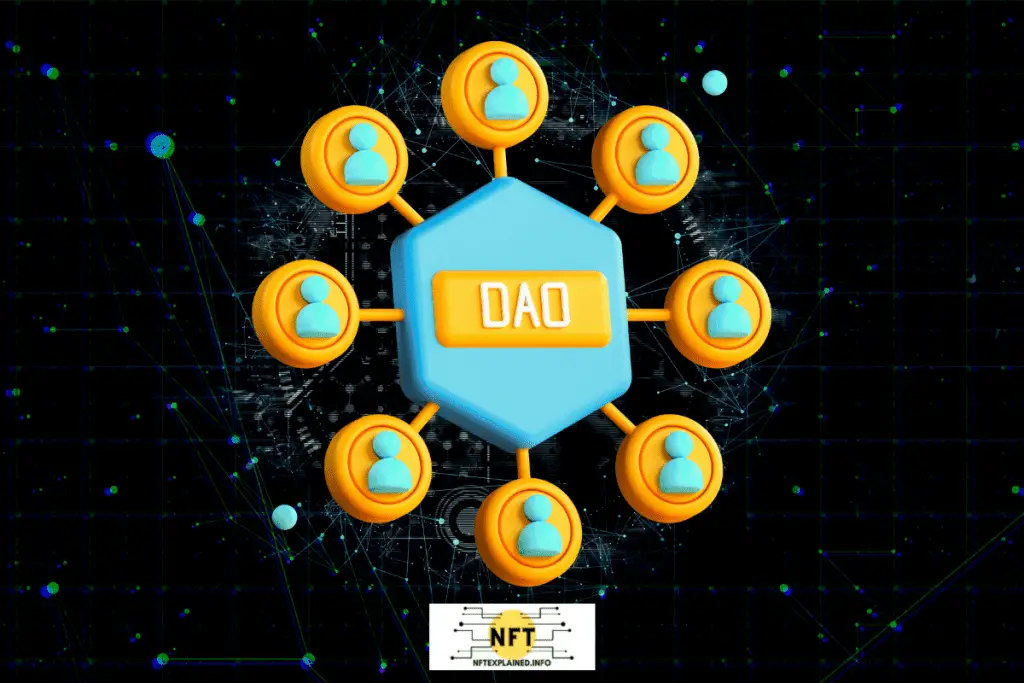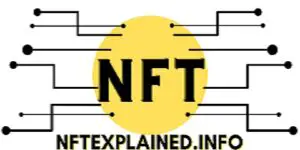
The blockchain space can be a tricky sector to navigate and that challenge is exactly what motivates our team at NFTexplained; we are looking to provide you with educational content that is easy to understand.
Let’s start learning: what is a Decentralized Autonomous Organizations (DOA)?
A Decentralized Autonomous Organizations (DOA) is a way for a project – typically within the cryptocurrency space – to be governed by a community, where community is typically defined as token holders. DOAs operate using smart contracts or self-executed code in order for token holders to influence the direction of a project.
This may seem complex because DOA involves a couple key aspects from the blockchain space – specifically governance by a community and smart contracts; we will explain both of these topics – so stick around.
DOAs are often run by blockchain projects in order to give power to the people who believe in the project – typically those who have invested in it and hold the governance tokens.
To further explain this, let’s look at a real world example.
What Is An Example Of A Decentralized Autonomous Organizations (DAO)?
Decentralized Autonomous Organizations (DOA) are governed by those who hold the project’s tokens; those who hold more tokens have greater authority or voting power. Token holders in a DOA can create and vote on proposals. An example is Decentraland’s DOA. Continue reading to learn more.
Decentraland is a metaverse related game that is run atop the blockchain using aspects like non-fungible tokens to allow its users to own assets within the game.
Decentraland has a DOA known as the Decentraland DOA (who would have guessed) which allows users – who hold the game’s ERC-20 token (known as the $MANA cryptocurrency) – to create and vote upon proposals. More on the metaverse game can be found in our team’s full guide linked here and more on Decentraland’s DOA can be found here.
An example of the existing proposals that are currently being voted on include:
Would you like to mint a wearable without knowing the exact item/traits being minted?
Should the location 29,-32 be added to the points of interest?
Allow our team to explain the above proposals. Minting or adding an asset to the game requires uploading the asset to the blockchain. This proposal is essentially stating: should the game allow users to purchase assets and then not reveal them (and make them an NFT) until a certain date. This is similar to how NFTs projects have a reveal date.
The second proposal is more simple and is essentially asking if a specific location within the game (i.e. 29,-32) should be added to a highlighted list of locations – which is shown to all users. Points of interest locations are the most popular and help users locate interesting experiences.
So holders of the games’ cryptocurrency – $MANA – have a real ability to collectively influence the direction of the metaverse’s future as they get to vote on proposals and author them.
Now that we understand the core principles and have seen an example, let’s further examine how they work.
How Do DAOs Work?
Users who hold the project’s cryptocurrency have the opportunity to vote and influence the direction of the project. Proposals are often written in smart contracts that will only execute if the majority (i.e. 51% or more) agree to it. Most commonly, the founders group of blockchain developers create this code.
Proposals are typically created and voted on in what is comparable to a forum – like Decentralands’ Agora – which is a decentralized application that acts like a website; however verification for those who can vote must be completed by connecting a blockchain wallet (which verifies, in this case, if you own $MANA).
That being said, once the proposal has been agreed upon by the majority of the community – specifically the investors in the project (as they must hold the project’s token) – the updated code is deployed by a blockchain developer.
Most commonly, the blockchain developers will be a part of the project’s founding team; however, there are some cases where community members who have the knowledge and skills to deploy the smart contract code will do so upon the beginning of the poll.
In the smart contract code, there will be terms stating that execution occurs only if the majority (i.e. 51%) agree that it will be encoded. This is why the A in DAO stands for autonomous as this process is executed without the need for a pause; for an example of this we can look at the Decentraland metaverse as it is never not accessible (as these updates are executed in real time via code).
To conclude our article, let’s examine the pros and cons of a DAO.
What Are The Benefits Of A DAO?
A DAO allows a project to be more decentralized as the community – or investors in the project as evidenced by their ownership of the governance token or projects’ cryptocurrency – get to collectively influence a project. Factors like transparency, automation and accessibility arise; we will further explain these aspects below.
Since DAOs are built atop the blockchain, a high level of transparency is present as everyone has the ability to examine any and all transactions. This allows for a higher level of trust within a given project.
Automations are possible as code deployed through smart contracts is essentially what allows for the implementation of changes. This can make the project more efficient, especially if the projects’ vested members deploy the smart contract code to rollout updates. However, the smart contract code is most commonly deployed by the founding teams’ blockchain developers.
Accessibility becomes widely possible because of the lack of barriers to begin creating and voting on proposed changes. The only barrier to participation is often holding the projects’ cryptocurrency; however, this aids in ensuring that the community has the projects’ best interest in mind (as the decisions by the DAO have a direct impact on the project and therefore the projects’ cryptocurrency).
Conceptually, this is how stock ownership works for publicly traded companies – voting power is determined by the percentage of outstanding shares owned. However, as a practical matter, holding shareholder votes via paper ballots is slow and exceedingly expensive.
Only the very largest of shareholders hold enough stock to sway the board to put a ballot measure in front of investors. Additionally, the existence of classes of shares means the board often has voting rights that are far more impactful than holders of common stock.
Holding governance tokens allow you to vote in a DAO, and in a more accessible way – relative to stocks – as anyone with an internet connection and the relevant digital asset can vote.
What Are The Downsides Of A DAO?
While DAO’s have many benefits as previously discussed, there are some downsides that arise. These include the complexity of DAO management, risk of smart contract mistakes and the risk of a 51% attack. These are all factors to take into consideration.
Complexity is a factor that will likely no longer affect you as you have taken the time to understand and have done your due diligence to become an expert on DAOs. However, those who don’t understand DAOs may be less likely to participate since this topic can be challenging to understand.
Smart contract mistakes are always possible as once the code is written and the terms are met, the contract will execute… even if there is a mistake in the code that has arisen from human error.
A 51% attack is possible and can occur if a single entity owns 51% of the governance tokens – therefore allowing a single entity to drive decisions (which could negatively affect a project). As projects become larger, this becomes less and less of a threat.
For this to occur on the Ethereum blockchain, an entity would have to own more than nine billion dollars worth of Ethereum. Additionally, it doesn’t make sense for someone who is that vested in a project to negatively affect the price of the tokens they own, given the large financial investment they’ve made.
If you found our content helpful please consider following our team on Instagram, Twitter & TikTok! As well as subscribe to our YouTube!
Additionally, please consider supporting our team’s content creation through doing business with our partners: Buy a Ledger hardware wallet. Trade stocks & crypto on Webull – get 2 free stocks. U.S. users can get a crypto trading discount on Binance!
